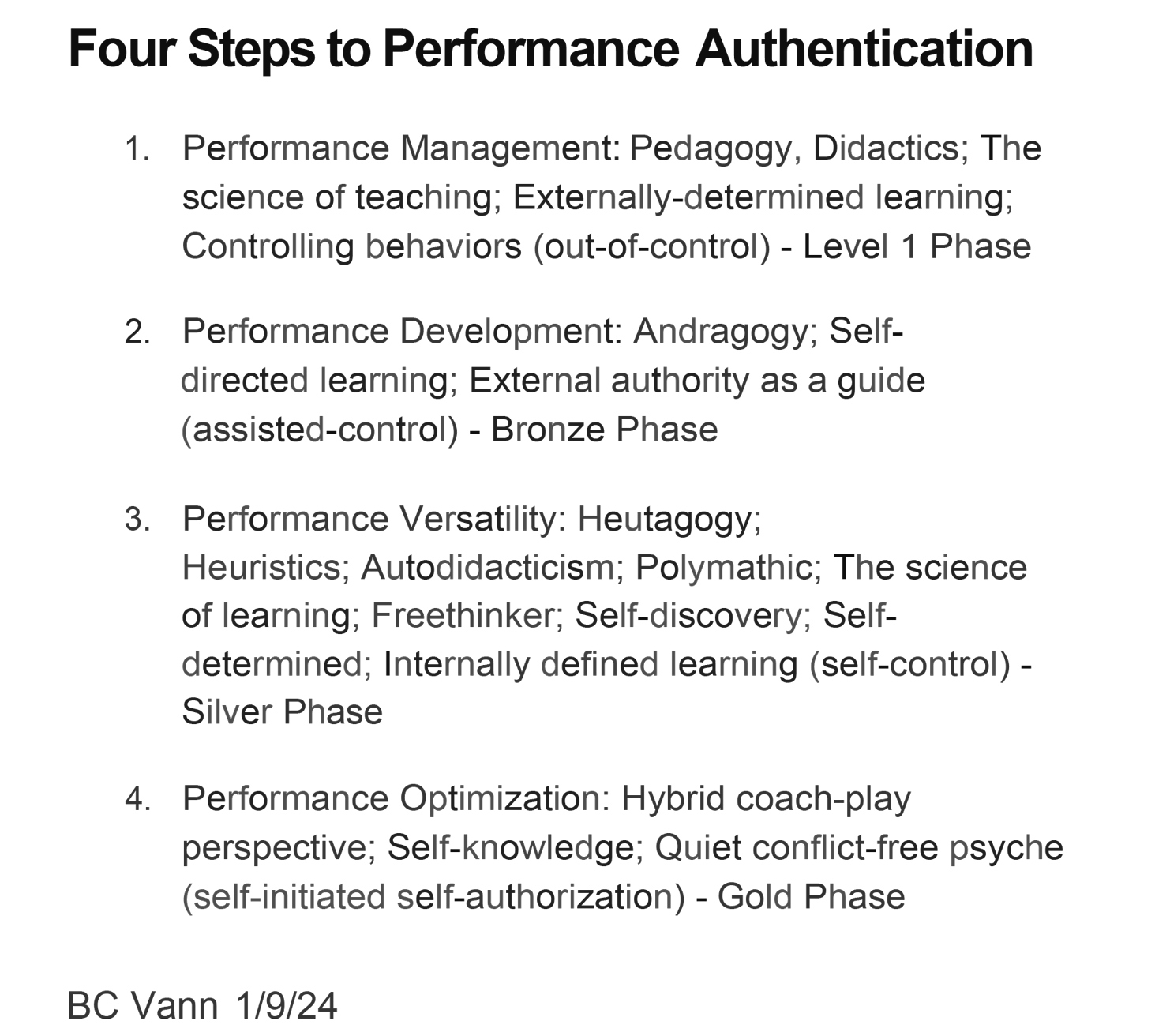As Your Resource For Self-Development
- The Optima Bowling Coach (2025)
Traditional Performance Management
(Page Update 3/27/22)
3/16/25 Note: As you can see, this page was last updated on 3/27/22. And a lot has changed for the Optima Bowing Coach and site since then. At a minimum, the content on this page remains relevant as a historical account of Performance Management, the mainstream approach to coaching, which had been the primary influence (mostly negative) on my playing and coaching perspective during most of my life, and the reason why, in 2010, I established the Optima Bowling Coach Research & Development company to research the prominent problematic teacher-student relation. Now (since February 2023), the results of my research for my development have broadened my understanding of why the teaching and learning dichotomy of external teacher-directed and internal student-determined is still the main reason for what the hell is wrong with this crazy, emotional, and idiotic world of ours.
See More: Four Steps to Performance Authentication
Coaching by Controlling Behaviors
Traditionally, as performers, we are taught to control a sequence of certain preferred behaviors.
Coaches say they want you to think out there, but coach "good habits." I get it, the athlete, by not thinking about a list of preferred behaviors you have continuously been drilled on, you can think. Since you cannot observe your behaviors in action anyway, it seems reasonable, this type of coaching could result in freed-up mental space. From which, coaches hope, you'll be awake enough to respond to any unpredictable happenings, unforeseen things not included on the coach's preferred behaviors list.
Does that make sense?
It is true. Humans can instantly learn and change while perceiving in-action in real-time (what coaches sometimes referred to as instinct). However, instead of helping the athlete develop their innate capability, coaches traditionally attempt to help perfect performance by adding to the behaviors sequence routine. Building a more advanced mental and physical habits list of "the right things." Coaches hope this "right things" practice will prove successful for each athlete, in their way.
Traditional performance coaching, commonly referred to as Performance Management, shares its behaviorism lineage with behavior management, behavior modification, and behavior therapy.
According to conventional business practice, for example, Lean Thinking, coaches mainly judge and guide as an observer of behaviors, as an external authority. Coaches serve as what master musicians consider "outside ears" to listen carefully and help keep them on track by providing feedback to help them remain aware of where they are falling short.
The Lean Tradition
A condensed look.
From my experience with "Lean Thinking" it seems that the focus is a management process for eliminating waste, named "kaizen," the Japanese word for continuous improvement.
- Observe the actual conditions of a process to grasp the current conditions thoroughly.
- Think of better ways to make the work easier for the worker to eliminate waste [Work behaviors are: (1) Value-Creating: necessary steps; (2) Incidental Work: actions that don't create value from the standpoint of the customer; and (3) Waste: activities that create no value].
- Applying the changes through trial and error.
Coaching is an essential practice for lean leaders. Traditional managing is about thinking; but too often it becomes trying to do the thinking for others. Whereas, leading through lean thinking and practice is about getting others to think and to think about the right things. And that's the essence of good coaching. Skillful coaching focuses attention on the right things for improved performance. (Reference: Lean.org)
As popularized in business circles, this type of coaching is referred to as "controlling behaviors." Besides Lean, I have experienced "Integrity Coaching" and "Coaching for Performance."
These methods are popular because they work. To a certain extent, that is, as the saying goes, "good enough." But these practices only work at the first of four performance levels; performance management.
Reference book: "Coaching for Performance, GROWing People, Performance, and Purpose" John Whitmore (Third Edition 2007)
The Coaching Problem to Solve
As reviewed above, the traditional coaching focus is on listing and then controlling preferred behaviors. Since it is a relatively simple method to employ, it has been much appreciated by business leaders. However, it has always had a glaring drawback, the external authority principle of carrot and stick leftover from the command-and-control Industrial Age. Unfortunately for athletes, this performance management practice is also shared by most athletics coaches.
So, coercion still remains to this day as the universal coaching tactic to accomplish the job.
Teaching and Learning Environment
As envisioned, the Optima Bowling Academy teaching and learning environment will feature four performance phases.
Performance Phases

See More: Four Steps to Performance Authentication
The essential message here is the traditional methods are not conducive to developing Man's innate capacities and natural performance optimization learning capability as autonomous, self-determined individuals. Instead, let me share what the Optima Bowling Coach vision-in-action will lead us to.
See Next: Traditional Performance Development
Back To: The Elements of a Cohesive Life View